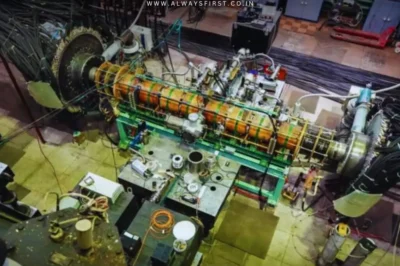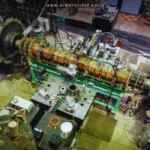Key Takeaways:
✔ Faster Mars Missions – The plasma engine could reduce travel time from Earth to Mars to just 30 days, compared to current 6-9 month journeys.
✔ Continuous Thrust Technology – Unlike traditional rockets, this engine accelerates steadily, improving efficiency and reducing deep-space radiation exposure.
✔ Nuclear-Powered & Hydrogen-Fueled – Uses lightweight hydrogen and a potential onboard nuclear reactor for sustained energy, setting it apart from conventional propulsion.
Russia’s Plasma Engine: A Giant Leap Toward Faster Mars Missions
In a development that could redefine space travel, Russian researchers have successfully built and tested a magnetoplasma engine capable of reaching Mars in as little as 30 days—a dramatic improvement over the current six to nine months required with conventional rockets.
Developed by scientists at Rosatom’s Troitsk Institute, this breakthrough propulsion system ditches traditional fuel combustion in favor of electromagnetic acceleration, propelling hydrogen ions at staggering speeds of 100 kilometers per second (360,000 km/h). For perspective, today’s chemical rockets max out at around 4.5 km/s.
How Does It Work?
Unlike standard rockets that provide a single explosive burst of thrust before coasting, this plasma engine operates continuously, steadily accelerating the spacecraft.
“The working body consists of charged particles accelerated by an electromagnetic field, allowing much higher speeds than chemical propulsion,” explained Alexei Voronov, a lead scientist at the Troitsk Institute, in an interview with Izvestia.
This method not only shortens travel time but also minimizes astronauts’ exposure to deep-space radiation—a critical hurdle for long-duration missions.
A Working Prototype Already Exists
What sets this project apart is that it’s not just theoretical—a functional prototype is already undergoing rigorous testing inside a massive vacuum chamber (4 meters wide, 14 meters long) that simulates outer space conditions.
Operating at 300 kilowatts, the engine has demonstrated an impressive 2,400-hour lifespan—enough for a round trip to Mars.
“Our primary goal is to validate the prototype’s performance in pulse-periodic mode,” said Konstantin Gutorov, the project’s scientific advisor. A space-ready version is expected by 2030, though it won’t replace traditional rockets. Instead, it would activate after reaching orbit, handling the interplanetary journey.
Why Hydrogen? Efficiency & Abundance
Hydrogen, the lightest and most abundant element in the universe, was chosen as the fuel for its efficiency. The engine doesn’t require extreme plasma temperatures, reducing wear and tear while maximizing longevity.
Though its 6 newtons of thrust may seem modest, it’s the strongest among existing plasma propulsion projects. Unlike chemical rockets, plasma engines prioritize sustained acceleration over raw power, making them ideal for long-haul space travel.
Powering this system would likely require an onboard nuclear reactor, presenting engineering challenges but ensuring a steady energy supply for continuous operation.
How It Compares to Current Tech
Plasma propulsion isn’t entirely new—Russia’s thrusters already power satellites like OneWeb and NASA’s Psyche mission, achieving exhaust speeds of 10-50 km/s. However, this new engine doubles that range, positioning it as a potential game-changer.
“This development is ahead of the curve,” noted Nathan Eismont of the Russian Academy of Sciences, highlighting that Russian plasma engines are already in use internationally.
Challenges & Next Steps
Despite the excitement, hurdles remain. The technology hasn’t undergone independent peer review, and integrating it into a full-fledged Mars mission is still untested. Yet, with a working prototype in action, this isn’t just speculation—it’s a tangible step toward faster, safer interplanetary travel.
Could this be SpaceX’s biggest competition yet? Only time—and further testing—will tell.









































Leave a Reply